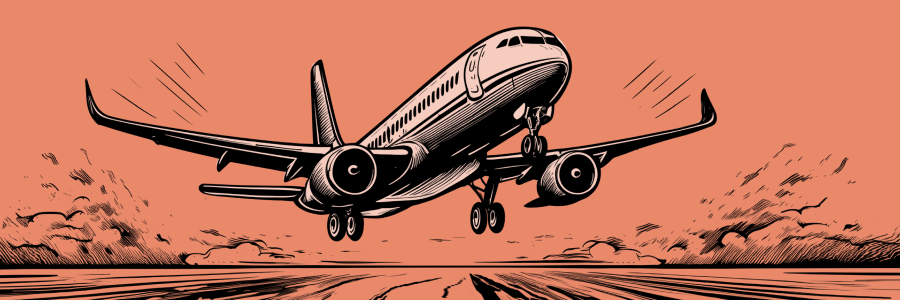What is Cash Runway + How to Calculate it

Jump to
What is a cash runway?
Your cash runway is the number of months until you run out of cash at your current rate of spending.
If your business spends more money than it brings in, you burn cash. When you continue to burn cash and reach the end of your cash runway, you’ll be out of cash and time.
How to calculate cash runway?
To calculate your cash runway, you must first know your monthly cash burn rate. You can calculate your cash burn rate in one of two ways.
One option is to look at last month and calculate the difference between your starting and ending cash balance for the month.
Another option is to review your budget, calculate your total planned spending for an average month, and subtract that from the average planned revenue you hope to bring in.
To calculate cash runway, take your total cash reserves and divide them by your burn rate to calculate your cash runway.
Cash Runway = Total Cash Reserve / Burn Rate
For example, if you have $200,000 in the bank and your burn rate is $50,000 per month, it will take your business four months to run out of cash.
$200,000 / $50,000 = 4 months
It’s worth mentioning that you can develop a more accurate prediction for your cash runway by creating a cash flow forecast.
While using burn rate is simple and useful, forecasting will help you develop a much more accurate prediction of how you’re using your cash and when you might run out. You can adjust your forecast each month as actual numbers come in for the most accurate results, rather than using average spending and revenue estimates to calculate cash runway.
The importance of cash runway for your business
The simplest benefit of knowing your cash runway is baked into the definition—you know how long your business will last without adjusting your spending or bringing in more revenue. But it also provides you with a few other benefits:
A timeline for making adjustments: If you have six months left until you’re out of cash, you know changes need to be made within three to four months to avoid entirely burning through all of your cash. Signals if you’re overspending: If you’re not extending your runway and your burn rate has remained consistent or increased over the last few months, you need to find ways to cut costs or bring in additional revenue. Signals that you need additional funding: If you’re struggling to improve your runway, and can’t cut costs or increase revenue, you may need to explore additional funding sources to remain operational. It helps you avoid confusing profits with cash: Cash and profits are different, and even profitable businesses can have a limited cash runway. Knowing how much cash you have and how long it will last will make you less likely to see profitability and assume that your business is doing just fine. Improves investor confidence: Maintaining a healthy cash runway shows that you know how to manage your business and can help secure funding and attract investment. Signals that you can reinvest in your business: If your runway is extending and your cash reserves are growing, it may be a sign to explore reinvesting that cash into growth initiatives for your business.
Who should pay attention to cash runway?
Every business owner should understand their runway and revisit their cash positions monthly in order to avoid suddenly having no cash in the bank.
However, knowing your runway is especially important if your startup or business is pre-revenue—which means you are not generating revenue from customers yet.
In this circumstance, you likely have a product or service that shows a lot of promise and generates an initial investment. Your goal is to use that cash to generate positive cash flow before you completely run out. While it may be possible to get additional funding, you can’t necessarily rely on that, meaning you have to know how long you can last without revenue.
If you’re a mature business generating revenue, you should now use your cash runway to help answer questions like:
Are there areas of your business where spending can be optimized? Are you truly maximizing revenue? What’s the ideal runway before you can reinvest your cash? How much cash can you reinvest to fund faster growth?
Further Reading
Your runway still functions as a signal of how long your business can last. As you reinvest, there may be times when your runway shrinks. As long as this is purposeful and planned for, you’re still running a healthy business.
A successful business eventually stops having a negative burn rate and accumulates cash instead of “burning” it. At this stage, you are no longer calculating how long your business can stay alive but looking ahead to future growth opportunities.
What is a good cash runway?
According to SCORE, a good rule of thumb is to have enough cash reserves to last 3-6 months (similar to a personal emergency fund). Other experts say it’s better to have a runway that doesn’t fall below 12 months and even lasts for up to 2-3 years.
However, the appropriate length of your cash runway really depends on your business, the volatility of your industry, how effeciently you’re spending, and ultimately your own sense of risk.
To figure out your cash runway, ask yourself, ‘If sales were to dry up and I still had to maintain expenses, how long would I want to be able to operate like this?’
While it’s not a very scientific method, it’s enough to get you thinking about what your ideal cash runway is. Just keep in mind that keeping too much cash in the bank can also lead to its own set of problems (like overspending) if you’re not careful.
How to extend your cash runway
If your cash runway isn’t as long as you’d like, there are a few ways to extend it (and many of them overlap with ways to improve your burn rate).
Cutting costs: Review your expense budget and other cash spending to determine what is absolutely necessary to keep your business up and running and what could be cut or minimized. Delay payments: Revisit your current payment terms and determine if any payments can be delayed or terms renegotiated. Increase your revenue: With your current product or service offerings, look for ways to bring in more customers, increase your closing rates, or raise your prices. Explore recurring revenue options: While not possible for every business, generating stable recurring revenue via a subscription, re-ordering, or long-term contract can increase the value of your current customers. Test new revenue streams: If you have yet to bring in revenue or operate off just one revenue stream, consider testing additional options and even cutting products or services that are underperforming. Offer discounts: If your struggle is specifically related to acquisition, consider lowering prices or offering pricing incentives to attract more customers. Speed up customer payments: If you offer delayed payment options other than cash, check, or credit card to your customers, consider tightening up those customer agreements to bring in cash sooner. Sell off assets: If you have equipment, inventory, or other assets that won’t dramatically impact your business if they’re gone, consider selling them to increase your cash reserves. Get additional funding: Consider all your funding options, including investors, loans, crowdfunding, friends and family, or even your own personal reserves. Just be sure it will be impactful enough and not place your business (or personal assets) in further jeopardy.
Where to find your cash runway in LivePlan
LivePlan’s cash forecasting software automatically calculates your “future cash low point” for you. It’s available on all of your financial forecast views, so you can easily see how changes in your forecast impact future cash.

Because LivePlan uses accurate and more detailed forecasting and budgeting, its cash runway calculation accounts for all your projected spending and income and how that changes over time to calculate your cash runway.
If you connect to your accounting system, LivePlan can update the calculation automatically every month based on your actual business income and spending.
You can also view a detailed cash flow forecast in LivePlan to see your cash position for each month into the future.

Switching to “Cash on Hand” at the top of the cash flow report will shift the chart to display your cash reserves. This will tell you if you are building up or burning through your cash and how long your cash is projected to last (based on your forecasts).
For more granular detail, scroll to the bottom of your forecast statement to view each month’s net change in cash and total cash at the end of the period.
Keep an eye on your cash flow
The better you manage your cash and understand your overall position, the more prepared you’ll be to pursue growth or handle a crisis.
To learn more about the impact of cash flow and how to manage it in your business, check out these resources:
Cash vs. profits: Learn why confusing profitability with cash can lead to dire circumstances for your business. How to review your cash flow statement: These are the five things to look for when performing a cash flow analysis. Cash flow forecast template: Take your knowledge of cash burn rate and put it to work with this free cash flow forecast template.
FAQ
No, your cash runway can increase and decrease, but it cannot be negative. It is a forward-looking metric that tells you how many months your business can operate at its current rate of spending before running out of cash.
While the meaning does not change—your cash runway is still how long you have until your business runs out of cash—it can be used differently when pursuing funding. For example, if you have a healthy and long runway, it can be a sign to investors that you are a good financial steward and a safer bet to invest in. For startups with a short runway, it can also be used to show how their investment will extend the runway and help fuel growth.
More in Planning

planning
How to Write a Bakery Business Plan + Sample

planning
How to Write a Brewery Business Plan + Free Sample Plan

planning
How to Write an Agritourism Business Plan + Example Templates
planning









